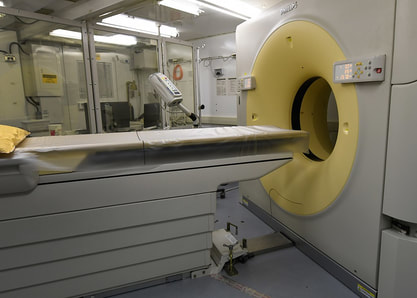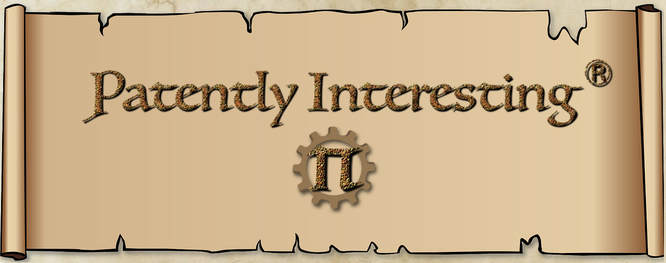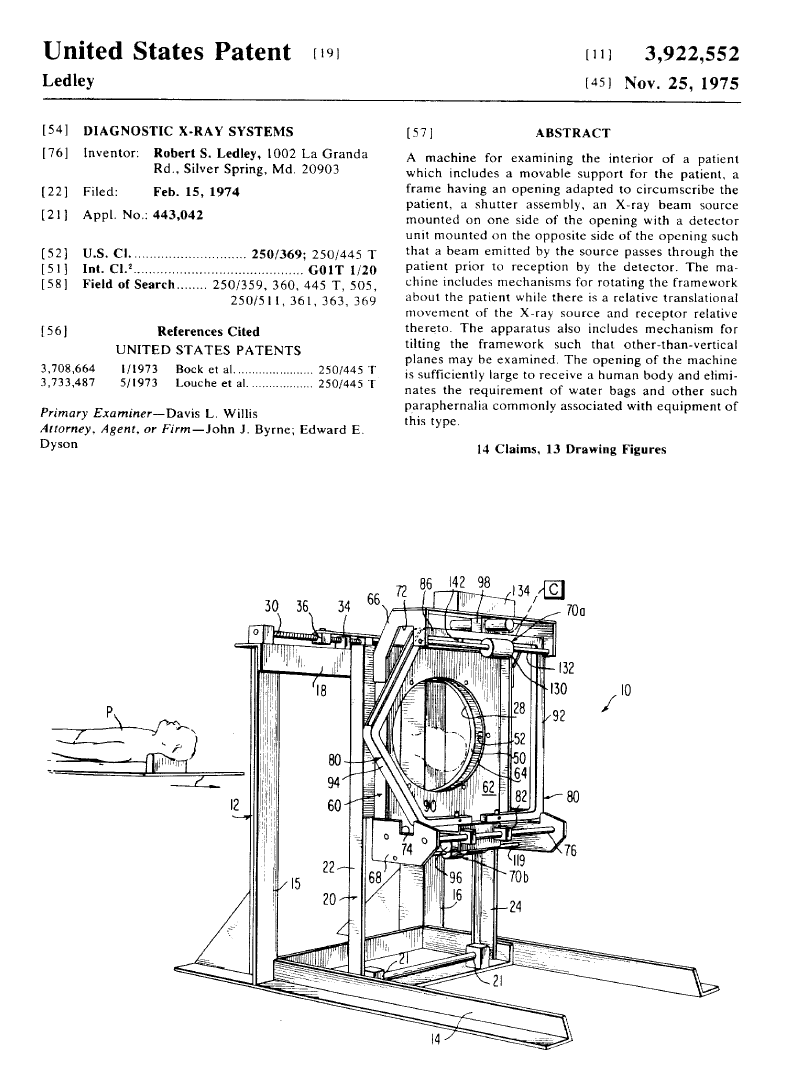 Modern CT Scanner
Modern CT Scanner
On November 25 of the year 1975, U.S. Patent No. 3,922,552 issued to Robert S. Ledley for "Diagnostic X-Ray Systems". It was the patent for the first full-body Computer Tomography (CT) scanner, which has revolutionized diagnostic medicine.
Oddly enough, Ledley was both a dentist and a physicist. Even though he was more interested in physics, Ledley's father convinced him to go to dental school because his father believed "a physicist can't make a living, really". So, Ledley went to dental school at the New York College of Dentistry during the day and, at night, took classes in physics at Columbia University. Ultimately, he received both his DDS and an M.A. in theoretical physics.
After a stint in the U.S. Army, where he helped develop techniques for fitting dentures, Ledley went to work at the National Bureau of Standards and then Johns Hopkins University and George Washington University. In 1957, Ledley started doing work for the National Academy of Sciences - National Research Council. His first task was to conduct a national survey of current and potential computer use in biology and medicine in the U.S. Ledley published the results of his survey in a November 6, 1959 Science article, entitled “Digital Electronic Computers in Biomedical Science” in which he predicted that in the long run, “perhaps the greatest utilization of computers will be in biomedical applications." The article has been credited with "sowing the seeds" for the field of medical informatics.
In 1960, Ledley started the National Biomedical Research Foundation (NBRF) to encourage the use of computers in biomedical research and development. In 1970, the NBRF became affiliated with Georgetown University Medical Center, which physically hosted their offices and laboratories. In connection with this new affiliation, Ledley joined the Center's School of Medicine as a professor in the Department of Physiology and Biophysics. It was here that Ledley developed the CT scanner.
In 1973, after losing government funding for his projects at Georgetown, Ledley became aware of a desire by surgeons for a scanning type of device. A brain surgeon showed Ledley a brochure for a head scanner that he desired, which unbeknownst to the surgeon hadn't even be developed yet. Desperate for funds, Ledley told the brain surgeon he could make a scanner for half the price, even though he didn't know what that price was. After some wrangling between the university and Ledley, the university agreed to give Ledley $250,000 to build a (whole body) scanner. And that's what he did, together with a small team comprised of an electronics engineer, a computer programmer and a machinist. Ledley did most of the overall design work for the CT scanner, as well as the detailed mechanical engineering for it. Painted blue at a local automotive paint shop, the resulting CT scanner was an instant success, helping save a young boy's life soon after it became operational.
Oddly enough, Ledley was both a dentist and a physicist. Even though he was more interested in physics, Ledley's father convinced him to go to dental school because his father believed "a physicist can't make a living, really". So, Ledley went to dental school at the New York College of Dentistry during the day and, at night, took classes in physics at Columbia University. Ultimately, he received both his DDS and an M.A. in theoretical physics.
After a stint in the U.S. Army, where he helped develop techniques for fitting dentures, Ledley went to work at the National Bureau of Standards and then Johns Hopkins University and George Washington University. In 1957, Ledley started doing work for the National Academy of Sciences - National Research Council. His first task was to conduct a national survey of current and potential computer use in biology and medicine in the U.S. Ledley published the results of his survey in a November 6, 1959 Science article, entitled “Digital Electronic Computers in Biomedical Science” in which he predicted that in the long run, “perhaps the greatest utilization of computers will be in biomedical applications." The article has been credited with "sowing the seeds" for the field of medical informatics.
In 1960, Ledley started the National Biomedical Research Foundation (NBRF) to encourage the use of computers in biomedical research and development. In 1970, the NBRF became affiliated with Georgetown University Medical Center, which physically hosted their offices and laboratories. In connection with this new affiliation, Ledley joined the Center's School of Medicine as a professor in the Department of Physiology and Biophysics. It was here that Ledley developed the CT scanner.
In 1973, after losing government funding for his projects at Georgetown, Ledley became aware of a desire by surgeons for a scanning type of device. A brain surgeon showed Ledley a brochure for a head scanner that he desired, which unbeknownst to the surgeon hadn't even be developed yet. Desperate for funds, Ledley told the brain surgeon he could make a scanner for half the price, even though he didn't know what that price was. After some wrangling between the university and Ledley, the university agreed to give Ledley $250,000 to build a (whole body) scanner. And that's what he did, together with a small team comprised of an electronics engineer, a computer programmer and a machinist. Ledley did most of the overall design work for the CT scanner, as well as the detailed mechanical engineering for it. Painted blue at a local automotive paint shop, the resulting CT scanner was an instant success, helping save a young boy's life soon after it became operational.


